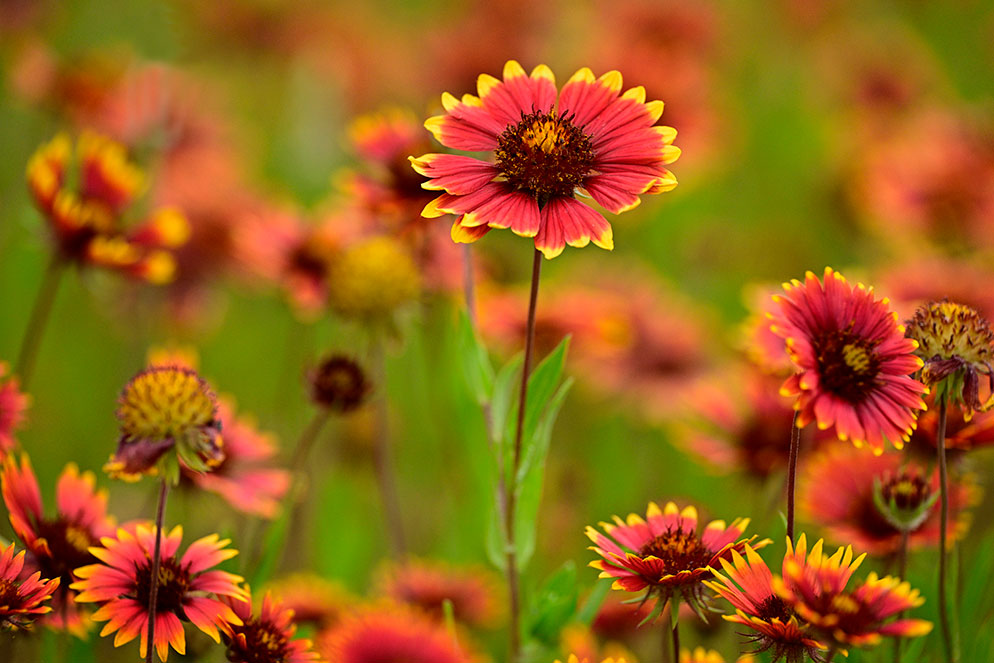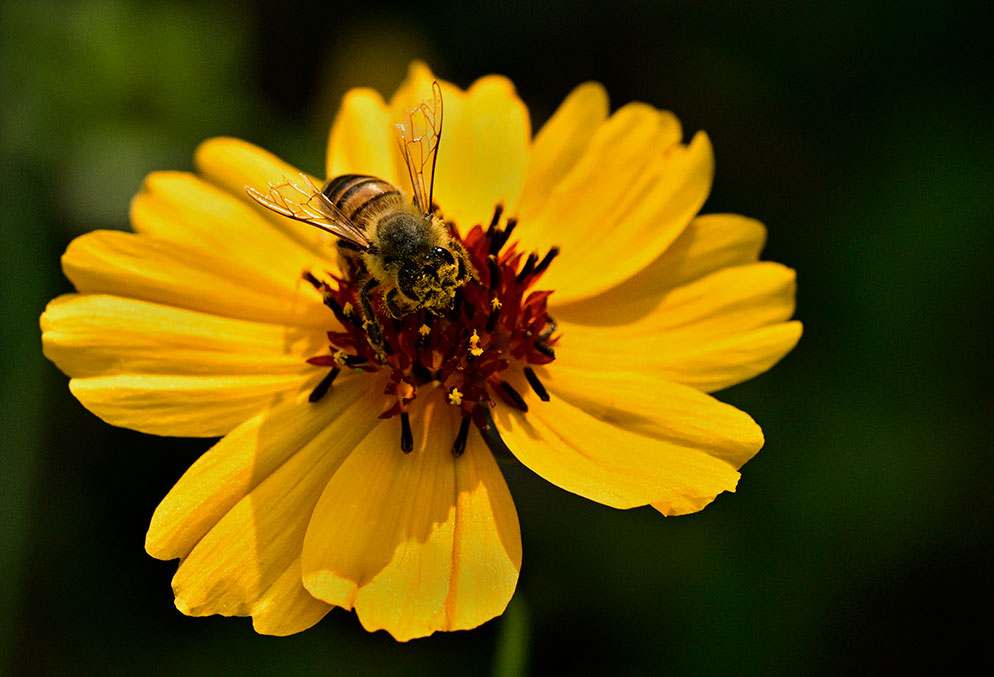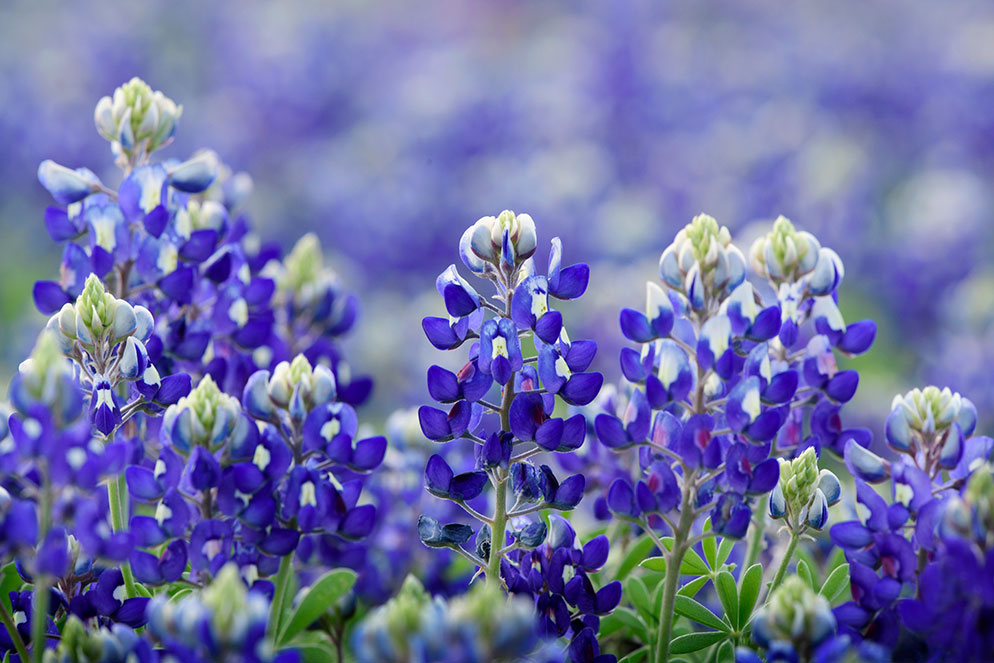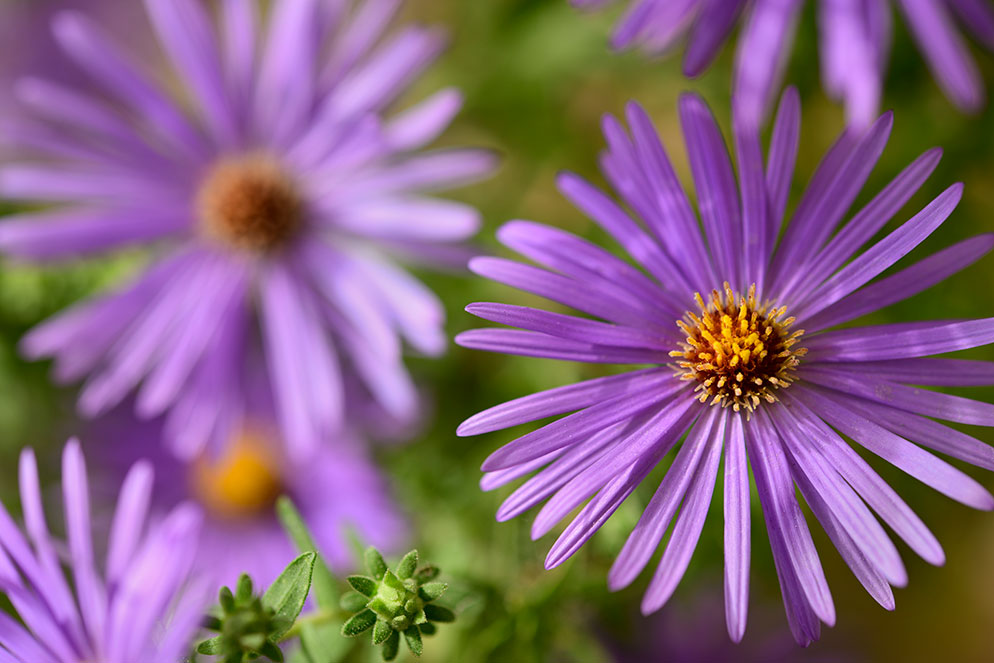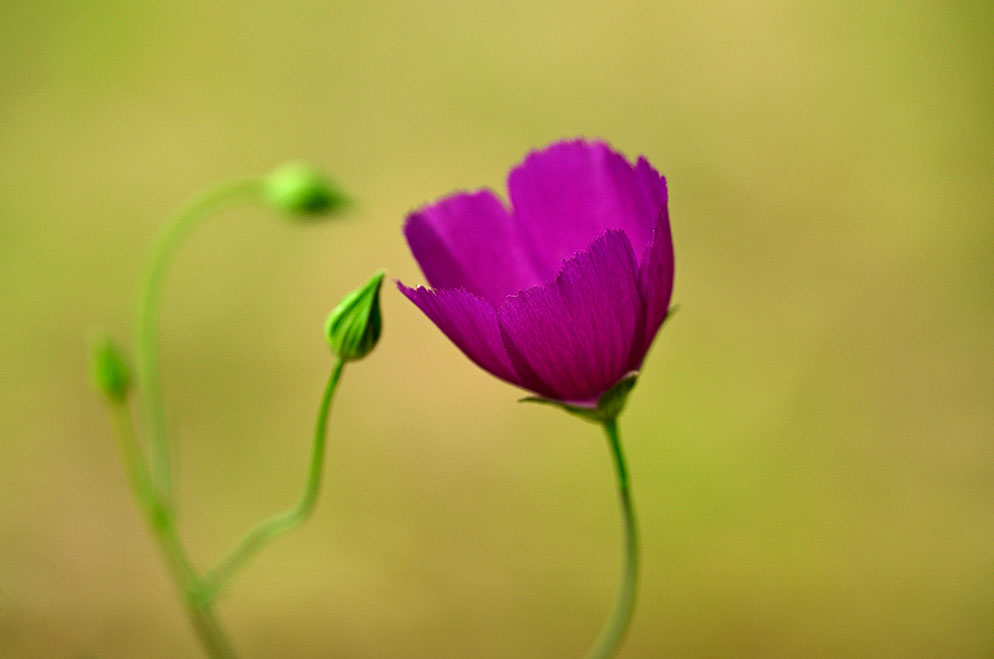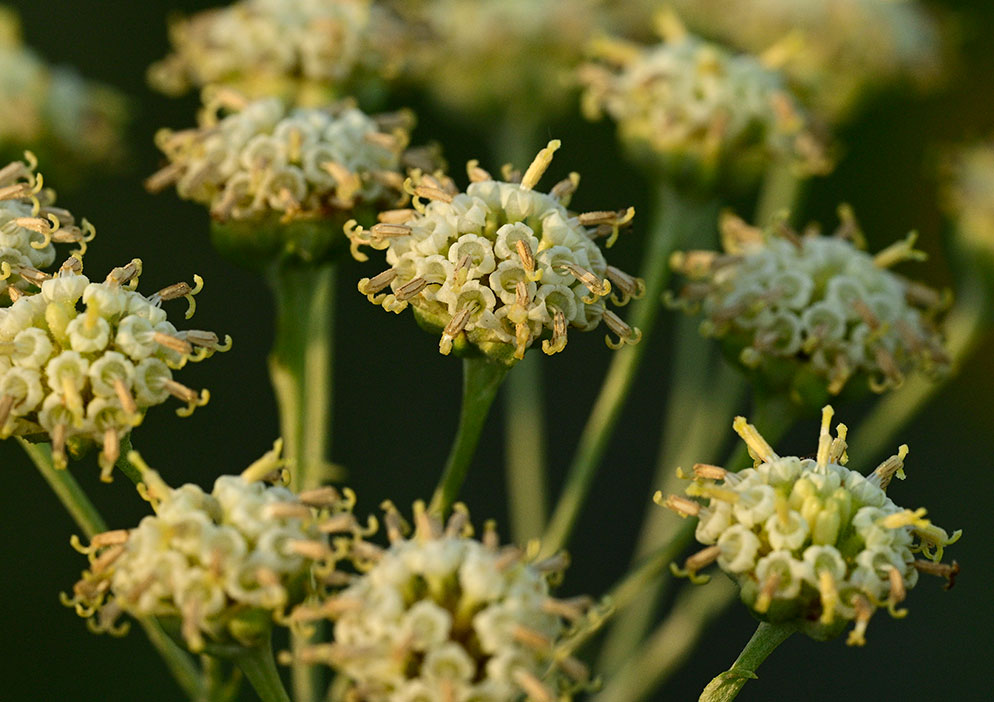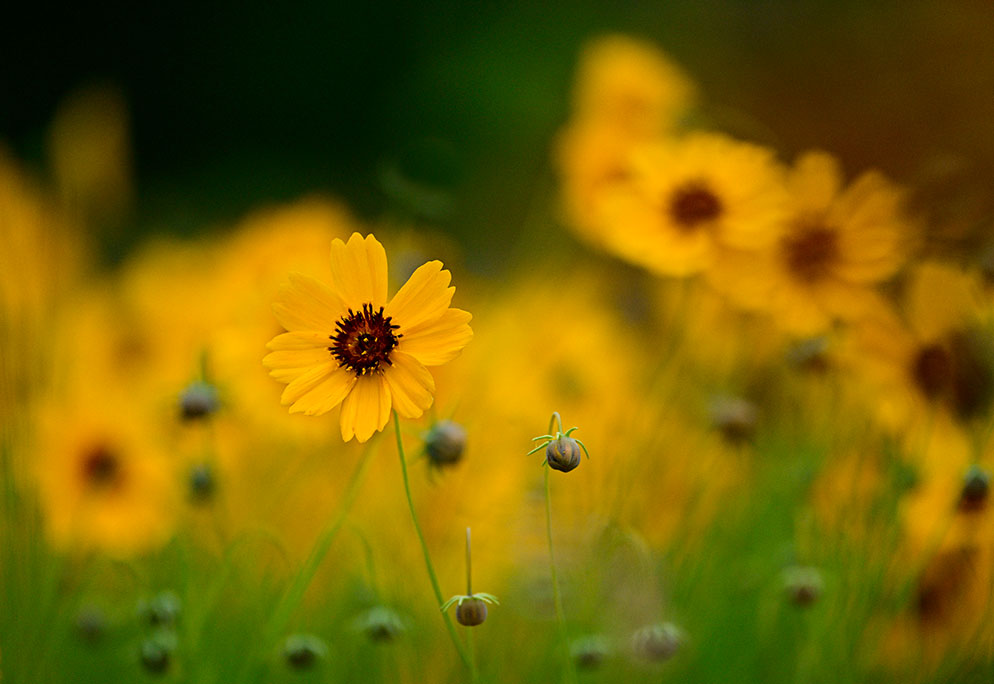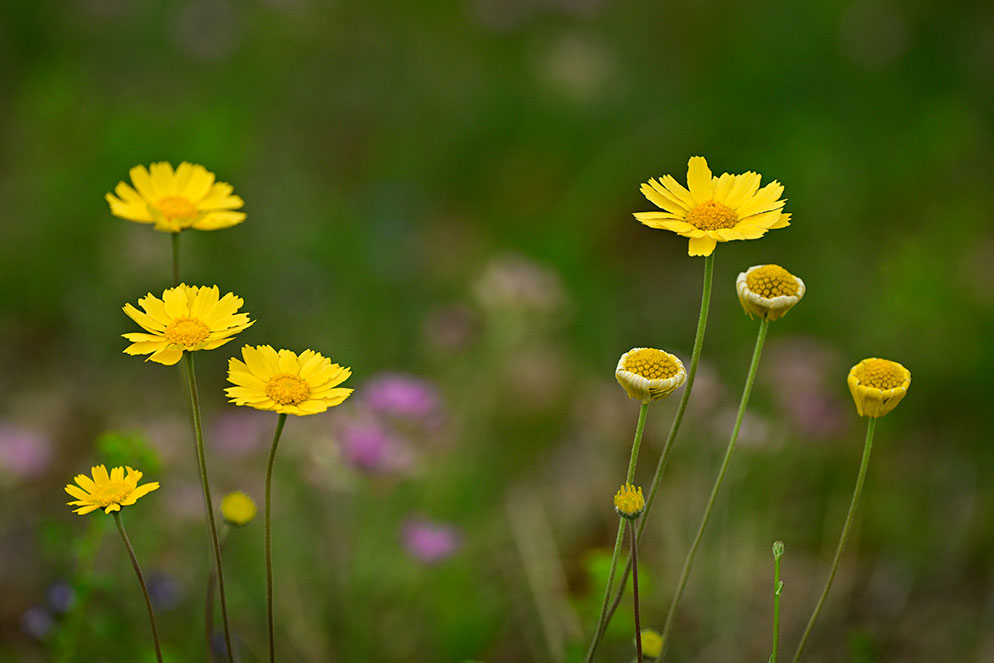Want to Get Closer to Great Flower Photography? Look to Your Lenses.
We’re going to take you through a field of flowers…not literally, but thoughtfully, because each of the photos here begins with thought. Randy Ziegler doesn’t just photograph—he explores. He doesn’t set out with preconceived ideas. His attitude is, Okay, here's what I see. Now what do I do with it?
What he’s been seeing lately are flowers—lots of them, and he’s become fascinated by their possibilities and by the benefits of photographing them not only with Micro NIKKOR lenses, which are designed for close-up photography, but also with NIKKOR telephoto lenses. A close-up advantage of a micro lens is its reproduction size—Micro NIKKORS are capable of 1:2 or 1:1 reproduction, which is half life-size to full life-size reproduction, respectively. Another advantage is close-focusing distance. For example, the close-focusing distance of the AF-S VR Micro-NIKKOR 105mm that Randy uses is about six inches; the closest distance of his NIKKOR Z 100-400mm is a little over two feet.
Telephoto lenses are often Randy’s choice for flower photography because of their framing versatility and the degree of background control they offer. Telephotos are known for their image compression—a visual effect that makes the foreground and background seem closer than they really are. The longer the lens, the more obvious the effect.
Let’s take a look at why his choices work so well.
Just Bee There
Greenthread - Z 9, NIKKOR Z 100-400mm f/4.5-5.6 VR S, 1/500 second, f/11, ISO 2000, aperture priority.
We start with a good reason for a telephoto—simply, keeping your distance so you don’t disturb your guest subject. The flower here is a greenthread, and Randy made this shot at 380mm using the camera’s DX crop mode for an effective focal length of 570mm. “You can see the pollen on the bee’s head,” Randy says. “Amazing resolution.”
The Back Story
Texas bluebonnets - D850, AF-S NIKKOR 300mm f/4D IF-ED, 1/60 second, f/11, ISO 400, aperture priority.
Texas bluebonnets in Randy’s front yard in a telephoto image that combines three of his flower photography concerns: telephoto compression, backgrounds and perspective. “I was kneeling down to include as much of the background bluebonnets as I could,” he says. “Frankly when I’m doing flower photography I’m obsessed with backgrounds. They make all the difference. What’s happening in and with the background is as important to me as the subject.”
Look Around
Aster - D850, AF-S Micro NIKKOR 60mm f/2.8G ED, 1/400 second, f/5.6, ISO 100, aperture priority.
This Micro NIKKOR image of an aster has two stories to tell—one is the straight-on, real-life look of the flower; the other, the softer, rather impressionistic, moody take. The off-center composition is a deliberate device to draw attention and encourage eye movement around the frame.
Take the Time
Indian blanket - Z 9, NIKKOR Z 100-400mm f/4.5-5.6 VR S, 1/200 second, f/6.3, ISO 1250, aperture priority
The scene was busy—there was a lot of activity from these Indian blanket flowers—and Randy composed the image with his telephoto zoom to take full advantage of it. “There was an acre covered with these flowers,” he says, “so I looked through the viewfinder and started to refine the choices. It was select, frame, reject, stay with it until I found the composition that worked best for me.”
Simplify
Winecup - Z 9, NIKKOR Z 100-400mm f/4.5-5.6 VR S, 1/160 second, f/7.1, ISO 800, aperture priority.
Here the idea was the opposite of the previous image, and it takes advantage of the zoom’s ability to select and isolate foreground elements with a wide-open field behind. “I call this ‘macro-style shooting with a telephoto’—careful composition and framing, focus choices and above all thinking about what I wanted this photo to be. There was a breeze, so I had my choice of whether the bud touched the winecup flower or not, and I tried different combinations at ten frames per second. This was the winner. You know the only problem with a scene like this? Deciding when to quit, because the thought is always, Is there something else?”
Size It Up
Purple coneflower - D850, AF-S VR Micro-NIKKOR 105mm f/2.8G IF-ED, 1/400 second, f/10, ISO 400, aperture priority.
For this Micro NIKKOR photo, Randy was crouched down, almost level with the cone flower, viewing through the finder, not the camera’s LCD. “I almost always want to meet the flower on its level,” he says, “to really show its distinct characteristic and bring the viewer in on that perspective.
In this picture, I also liked the tone changes in the background, but I had to be sure that background section was smooth and totally unobtrusive. I took my time framing to get the subject where it needed to be.”
Natural Selection
Poppies - Z 9, NIKKOR Z 24-120mm f/4 S, 1/640 second, f/8, ISO 800, aperture priority.
“I was doing a walkabout in a small Texas town with my targets being old doorways and peeling paint, but the light wasn’t right for those subjects. Then, a block away, I see these poppies planted in a water trough; behind them was a painted mural, there’s a railing in front and close on the left there’s a utility truck. I knew this was going to be an exercise in eliminating stuff, and that’s where the zoom lens came in. I spent about two hours of careful, selective framing and shooting.”
No Micro, No Problem
Fineleaf woolly-white - Z 9, NIKKOR Z 100-400mm f/4.5-5.6 VR S, 1/400 second, f/11, ISO 800, aperture priority.
Randy wanted to get as close to these fineleaf woolly-white flowers as possible, so he set his camera for DX crop mode to achieve an effective focal length of 600mm from his 100-400mm telephoto zoom lens. “I had the lens hood 24 inches from the flower, which would probably be a comfortable working distance for bees in flower pictures, or jittery butterflies that take off if you get too close.”
Purpose Driven
Red yarrow - D850, AF-S VR Micro-NIKKOR 105mm f/2.8G IF-ED, 1/250 second, f/7.1, ISO 640, aperture priority.
Randy composed this Micro NIKKOR photo of red yarrow flowers to make use of color as a compositional tool, especially the use of the soft background colors. When an image is composed carefully, colors spotted around the background will move viewers’ eyes around the image. “Not every flower picture has to have totally blown-out backgrounds,” Randy says. “You can have detail—just be careful to keep it under control and suited to a purpose.”
Slow Down
Greenthread - Z 9, NIKKOR Z 100-400mm f/4.5-5.6 VR S, 1/250 second, f/5.6, ISO 2000, aperture priority.
In this telephoto image of greenthread flowers, only one flower and two buds are sharp, a deliberate choice on Randy’s part. “This is as far from a grab shot as you can get,” he says. “Everything was considered. First, I was looking for a rhythmic composition, a grouping that worked, then I figured out the exact framing and, most important, the camera settings. The mistake would have been to shoot this at 1/2000 second—it was not the feeling I wanted.”
Design in Mind
Yellow daylily - D850, AF-S VR Micro-NIKKOR 105mm f/2.8G IF-ED, 1/250 second, f/11, ISO 640, aperture priority.
This is something a micro can do that a telephoto can’t—get really close so that two things are happening: color fills the frame and becomes a secondary subject, and the flower’s details are prominent in an image that’s as much about form as about the yellow daylily itself. “This photo needed that lens. I also needed to crouch but stay elevated enough to see inside and still show the edging on the leaf. When you have a design element like that, you have to bring it out. The thing is flowers offer so many choices—colors, backgrounds, angles and design elements—you’ve got to bring your A-game.”
Color Scheme
Indian paintbrush - Z 9, NIKKOR Z 100-400mm f/4.5-5.6 VR S, 1/500 second, f/7.1, ISO 500, aperture priority.
This telephoto image of Indian paintbrush flowers was composed to include the background so that the image would benefit from using the flowers’ colors in their softened, bokeh effect. “The background was a profusion of Indian paintbrush and bluebonnets—diffuse it, and its layering in softer tones is a magical setting for the asking.”
Balancing Act
Plains yellow daisy - Z 9, NIKKOR Z 100-400mm f/4.5-5.6 VR S, 1/640 second, f/8, ISO 800, aperture priority.
Plains yellow daisies in a telephoto image—some blooming, others soon to come. Randy took the image from his driveway, but it was anything but a quick shot. “They were swaying in the breeze, so I had to wait for quiet moments to get this.” Randy frequently encounters breezy or windy conditions. “My base is pretty much 1/250 second and I’ll work up from there, but I’ll also work with my frame rate—minimum for me is five frames per second, and I’ll go to ten and even 20 because just the slightest breeze will change the gesture of a flower. This photo took about 20 minutes and a lot of consideration of composition so the flowers were left and right, and the middle was open for the background. I liked that idea, that balance. I was thinking, Move this around, don’t just lock into a grid pattern; the subject won’t complain about all the time it takes to figure it out.”
Eyes On
Texas creeping oxeye - D850, AF-S VR Micro-NIKKOR 105mm f/2.8G IF-ED, 1/200 second, f/7.1, ISO 400, aperture priority.
“These are Texas creeping oxeye, and you see them everywhere,” Randy says. The effective background is blurred-out lupines to set off the oxeye. “There’s a lot of eye motion to the upward sweep, and tension in the diagonal lines, all deliberately built into the composition.” (We know that oxeye are considered shrubs rather than flowers, but we liked them enough to sneak in this Micro NIKKOR image of them.)
Contrast Control
Yellow coneflower - D850, AF-S VR Micro-NIKKOR 105mm f/2.8G IF-ED, 1/250 second, f/6.3, ISO 1000, aperture priority.
A Micro NIKKOR photo of a yellow cone flower. “There’s lots of sharp texture and detail in the flower against a trace of lupines in the soft background,” Randy says.“It was an overcast day, which is lovely light for flower photography. Cloudy-bright is good, too—I love the soft, enveloping light and the detail I get from the flowers. And there’s no worry about shadows or cross shadows, and that helps with where I want the viewer’s eye to go, when there’s nothing to distract or draw attention away.”
Tech Notes & Tips
Here are several things Randy does to give his flowers their imaging power.
-
Picture Controls. “The Vivid setting, for all my flower images.”
-
White Balance. Most times his setting is 5880° Kelvin, with a bump up to 6670° for a warmer look.
-
Lens Hood. He always uses it to keep stray light out and protect the lens. “Bumping into trees is a by-product of flower photography.”
-
Position. Most of the time, he’s kneeling or crouching and using his camera’s tilt or flip LCD monitor for a level-with-flower point of view.
-
Aperture priority exposure. Always, to control the background.
-
By the Numbers. “I don’t have favorite f/stops, but I do have a range I like to work in—5.6 to 7.1, because it gets more information than just the flower or a detail of it.”
-
AF-C (Continuous Autofocus). “It’s always on.”
-
Wide Area AF Small. “Choose it for your Z camera when working with small flowers, for precise control of AF on the closest subject in case of tiny adjustments.”
-
In-Camera Stabilization. “If you’re using a Z camera, it’s in there, and you should turn it on.”
-
Vibration Reduction. If Randy’s lens has VR, it’s on. And if he’s going to be moving while shooting, or it’s a windy day, he chooses the Sport setting.

